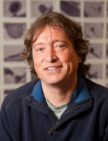WSU researchers see gene influencing performance of sleep-deprived people
will.ferguson
Washington State University researchers have discovered a genetic variation that predicts how well people perform certain mental tasks when they are sleep-deprived.
Their research shows that individuals with a particular variation of the DRD2 gene are resilient to the effects of sleep deprivation when completing tasks that require cognitive flexibility, the ability to make appropriate decisions based on changing information.
“Our work shows that there are people who are resilient to the effects of sleep deprivation when it comes to cognitive flexibility. Surprisingly these same people are just as affected as everyone else on other tasks that require different cognitive abilities, such as maintaining focus,” said Paul Whitney, a WSU professor of psychology and lead author of the study, which appeared in the journal Scientific Reports.
Find out more
WSU News
Science Newsline
Sleep Review
PsychCentral
ScienceDaily
Discover Magazine
Genetic Literacy Project



